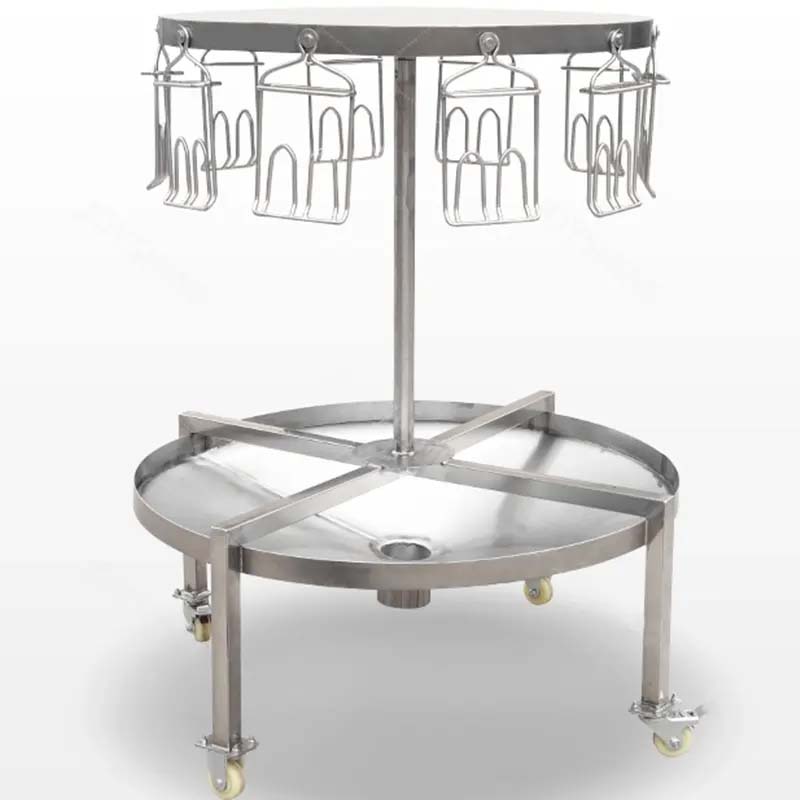Innovative Poultry Caging Solutions for Enhanced Productivity and Animal Welfare
Nov . 10, 2024 20:17 Back to list
Innovative Poultry Caging Solutions for Enhanced Productivity and Animal Welfare
The Importance of Cage Systems for Poultry Farming
Poultry farming is a vital part of the global agricultural sector, supplying meat and eggs that are essential components of many diets. As the demand for poultry products continues to rise, farmers are increasingly adopting various management systems designed to enhance productivity, animal welfare, and environmental sustainability. One such system that has gained prominence is the use of cages for poultry. While the debate about cage systems often centers around ethical concerns, their role in improving farm efficiency and biosecurity cannot be overlooked.
Enhanced Space Utilization and Efficiency
Cage systems for poultry, particularly in layers and broilers, offer several advantages in terms of space utilization. By housing birds in a controlled environment, farmers can achieve higher stocking densities without overcrowding. This setup not only maximizes land use but also allows for easier management and monitoring of the flock. The organization of birds in cages facilitates streamlined feeding, watering, and egg collection processes, significantly boosting productivity. For instance, the Automation of feeding systems in caged environments ensures that all birds receive adequate nutrition, leading to improved growth rates and egg production.
Improved Biosecurity and Health Monitoring
One of the critical advantages of cage systems is the enhanced biosecurity they provide. By keeping birds in enclosed cages, the risk of disease transmission is significantly reduced. This is crucial in poultry farming, as diseases can spread rapidly within flocks, leading to substantial economic losses. Caged systems allow for better hygiene management, as waste can be easily collected and disposed of, minimizing contamination risks. Moreover, the ability to isolate sick birds quickly helps to control outbreaks and protects the overall health of the flock.
Regular health monitoring is also more manageable in a cage system. Farmers can observe individual birds more easily, allowing for earlier detection of health issues. This proactive approach not only helps to maintain flock health but also reduces reliance on antibiotics, making the poultry products safer for consumers.
Welfare Considerations and Advancements
cage for poultry

The use of cages in poultry farming has been subject to criticism primarily due to welfare concerns. Critics argue that confinement may lead to stress and restrict natural behaviors, prompting debates about the ethics of caged systems. However, advancements in cage design have aimed to address these concerns. Modern cage systems, such as enriched cages, provide birds with more space, perches, nesting areas, and opportunities for social interactions. Such improvements can enhance the welfare of birds while still allowing farmers to maintain high production levels.
Additionally, the integration of technology into cage systems, such as climate control and automated monitoring, can further improve the living conditions for poultry. By maintaining optimal environmental conditions—such as temperature, humidity, and light—farmers can create a more comfortable setting for the birds, leading to healthier and more productive flocks.
Economic Benefits for Poultry Farmers
The integration of cage systems can also translate to significant economic benefits for poultry farmers. The higher efficiency and productivity associated with cage farming often lead to increased profit margins. As the global population continues to grow, and with it, the demand for affordable protein sources, farmers equipped with efficient cage systems are better positioned to meet this demand.
Furthermore, the initial investment in cage systems can lead to long-term savings. With reduced feed waste and lower mortality rates due to better health management, farmers can achieve a quicker return on investment. Additionally, improvements in biosecurity save costs related to disease management and loss of production.
Conclusion
While the choice of whether to use cage systems in poultry farming is complex and multi-faceted, it is clear that they offer distinct advantages in terms of efficiency, biosecurity, and potential economic benefits. As farmers strive to balance animal welfare with the demand for poultry products, continued innovation and advancements in cage design will be essential. By focusing on creating environments that support both productivity and the well-being of the birds, the poultry industry can move toward a more sustainable future, ultimately benefiting farmers, consumers, and the animals themselves.
-
Automatic Feeding Line System-Pan Feeder Nipple Drinker|Anping County Yize Metal Products Co., Ltd.
NewsJul.29,2025
-
Hot Sale 24 & 18 Door Rabbit Cages - Premium Breeding Solutions
NewsJul.25,2025
-
Automatic Feeding Line System Pan Feeder Nipple Drinker - Anping County Yize Metal Products Co., Ltd.
NewsJul.21,2025
-
Automatic Feeding Line System Pan Feeder Nipple Drinker - Anping County Yize Metal Products Co., Ltd.
NewsJul.21,2025
-
Automatic Feeding Line System - Anping Yize | Precision & Nipple
NewsJul.21,2025
-
Automatic Feeding Line System - Anping Yize | Precision & Nipple
NewsJul.21,2025






